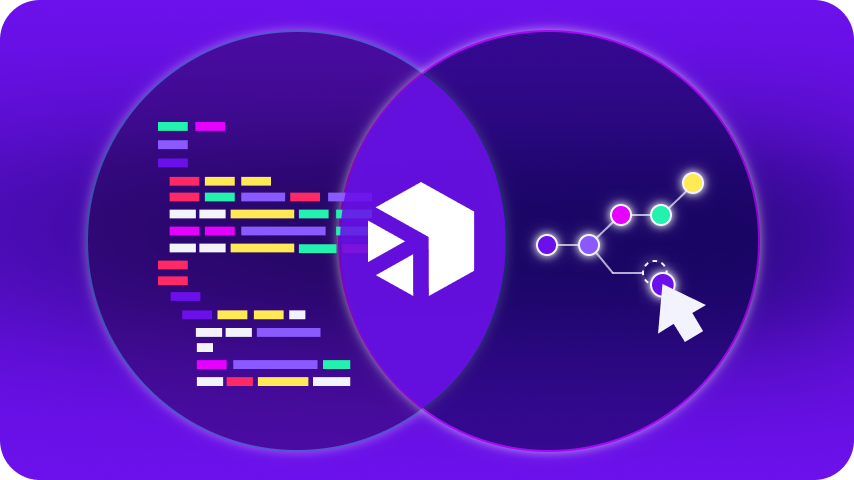October 14, 2022
According to us, the Gartner Integration Maturity Model quantifies the progression of enterprises in their digital transformation journey, providing a framework by which organizations can determine where they are across the five stages of maturity.
Stages of Enterprise Integration
Understanding your current state of integration–whether it’s average or amazing–helps to inform your overall strategy, providing tangible markers you must achieve in the advancement of this business-critical initiative.
In the report, Gartner identifies five different stages of enterprise integration:
| Stage 1: Ad Hoc – No formal (or informal) integration strategy is in place. Work is tackled on a project-by-project basis. No dedicated resources. |
| Stage 2: Enlightened – A formal policy is in place, but at a macro level. Dedicated human and financial resources are in place to support the work. |
| Stage 3: Centralized – An established team delivers integration services, with a formal, centrally managed sourcing strategy. |
| Stage 4: Collaborative – An Integration Strategy Empowerment Team (ISET) is created to govern and support distributed teams focused on integration. Education and engagement programs support expansion of the approach. |
| Stage 5: Self-Service Integration – IT and non-IT personas are empowered to self-serve, with the ISET managing the continuous alignment of self-service integration with the overall business strategy. |
Progression of Enterprises Within the Maturity Model
7% have successfully implemented an enterprise integration strategy
While some organizations transcend quickly through the different maturity models, most make slow progress, hampered by budgetary concerns, existing legacy infrastructure, and resourcing issues. As a result, Gartner estimates that less than 5% of their client base has achieved the highest maturity level, Stage 5: Self-Service.
These findings align with the 2022 Digibee State of Enterprise Integration Report, where only 7% of 1,000+ business and technology leaders reported that they’ve successfully implemented an enterprise integration strategy. So what’s taking so long?
Take the Lead with iPaaS
Rapid acceleration of your enterprise integration strategy isn’t always easy–and sometimes it’s not even possible, especially in the early stages (1 and 2). But as the business becomes more organized, even in Stage 3 with a centralized model, we see greater adoption of technology to help, in particular enterprise integration platform as a service.
The implementation of iPaaS streamlines the work required to connect systems, data, and other infrastructure, quickly advancing integration initiatives, including cloud migration, modernization of legacy architecture, and collaborative integrations across customers and partners.
Once supported with an iPaaS system, your enterprise will really start to evolve with the advantages of system integration, enabling activation of projects that drive meaningful value to the organization. Here are the top initiatives leaders prioritized in the 2022 Digibee State of Enterprise Integration report:
- AI & automation enablement (31%)
- Improve data security (28%)
- Improve security, reliability, governance (28%)
- Reduce operational costs (28%)
- Faster time to market (27%)
- Better business analytics and decision making (24%)
- Cloud migration, upgrade, or digital transformation (23%)
- Upgrade from legacy infrastructure (21%)
3 Steps to Achieve the Highest Maturity Levels
Progressive organizations lead the way at Stages 4 and 5 with an established ISET to manage and support integration initiatives across the enterprise. If your organization sits at a lower stage, don’t despair. Here are three key recommendations to help you quickly evolve to the highest maturity levels:
1. Define Your Current Maturity Stage
Take a cold hard look at your current integration capabilities. Are you investing too much time and money rebuilding what you’ve already built? The 2022 Digibee Enterprise Integration Report reveals that 98% of organizations repeatedly rebuild integrations for key business applications every year. With multiple applications running, the investment quickly becomes chronic and ongoing. Explore all of these inefficiencies and use them to support an iPaaS business case.
2. Build a Business Case for iPaaS
Digibee customers always have a clear-cut objective in mind prior to implementing the Digibee iPaaS. What’s yours? Revisit the list in the previous segment and select an initiative that is meaningful to your organization to help measure the ROI of enterprise integration. Research the best enterprise tool for your business, then build your iPaaS business case. This exercise will provide you with quantifiable efficiencies you can use to easily offset the budget and resources the project will require.
3. Create an Ad Hoc ISET to Lead the Charge
You don’t have to wait until you hit Stage 4 or 5 in the maturity model to build an ISET. Use existing in-house resources, the business and technology leaders who recognize that digital transformation is a business imperative. Harness the passion of curious developers, system architects, and citizen integrators who want to participate hands-on with the project. This is the team that will help guide you through all of the stages of integration maturity.
“By 2023 at least 50% of organizations will have an ISET to support self-service and other integration approaches.”
Integration Maturity Model, February 2022
With Digibee’s low code integration model, you can implement integrations 40% faster, decreasing operating costs with fewer incidents, faster recovery times, and zero downtime. These efficiencies help free up resources to focus on the highest value work for your enterprise.
Read the entire Gartner Integration Maturity Model report to determine where your organization stands, including delivery, strategy, platform, and engagement models across all stages.
To learn more about Digibee, request a demo now or check out our most recent 2023 State of Enterprise Integration Report.
Gartner, Gartner’s Integration Maturity Model, Abhishek Singh, Massimo Pezzini, and 2 more, 7 August 2020
GARTNER is a registered trademark and service mark of Gartner, Inc. and/or its affiliates in the U.S. and internationally and is used herein with permission. All rights reserved.













